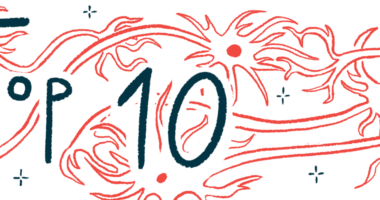Herbal Skin Patch as Add-on Therapy Slows ALS Progression, Trial Finds
Alternative, traditional Chinese medicine tested in placebo-controlled study

Adding a skin patch containing a Chinese herb mixture called Ji Wu Li (JWL) to standard medications significantly slowed disease progression in people with amyotrophic lateral sclerosis (ALS), according to data from a randomized clinical trial.
In the trial, called ALS-CHEPLA (ChiCTR200037353), the benefits of the herbal treatment emerged after eight weeks and were sustained up to 20 weeks, or about five months.
“Combining [traditional Chinese medicine] formulations with western medicine is an encouraging way to help alleviate symptoms and delay ALS progression,” the researchers wrote.
The study, “Slower progression of amyotrophic lateral sclerosis with external application of a Chinese herbal plaster–The randomized, placebo-controlled triple-blinded ALS-CHEPLA trial,” was published in Frontiers in Neurology.
120 patients randomized to herbal or placebo skin patch for 20 weeks
Despite existing ALS treatments, there remains a significant need for more effective and less costly medications that slow disease progression.
A number of herbal medicines derived from traditional Chinese medicine have been evaluated in preclinical models and clinical studies of ALS, and some are thought to offer benefits when used as an add-on to standard ALS treatments.
Oral administration of these medicines is limited, however, because of the large amount that’s required to have an effect. This also can be particularly challenging for ALS patients with bulbar involvement, in whom weakness in the muscles of the face, neck, and tongue can make swallowing difficult.
Transdermal, or on-the-skin, application could offer a way to deliver a concentrated formulation of the medication while avoiding the need for swallowing. Other potential advantages include prolonged release, improved patient adherence, and a minimization of side effects, the researchers noted.
Researchers in China launched the ALS-CHEPLA trial to evaluate the safety, tolerability, and efficacy of transdermal JWL — a mixture of Chinese herbs — against a placebo in ALS patients.
A total of 120 adult patients were recruited at the Shuguang Hospital, in Shanghai, and randomized to either the investigational treatment or a placebo, both administered as a self-adhesive patch on the patient’s upper back. No significant differences in terms of sex, age, body weight, and disease duration or progression were noted between these two groups at the study’s start.
Patches were worn on six consecutive days per week for six hours each day, followed by one rest day. This was repeated for a total of 20 weeks. Participants continued using their other regular medications.
Most participants (72) were men, and patients’ mean age was in the mid-50s. Seventy people had limb involvement only, meaning that their symptoms involved weakness in the limbs, whereas 25 had only bulbar involvement, and 25 had symptoms consistent with involvement of both regions.
A majority of the people in each treatment group, 47 of 60, completed the entire 20-week study.
The trial’s main goal was to assess changes in disease progression, as measured by the ALS Functional Rating Scale-Revised (ALSFRS-R), in which lower scores indicate greater functional impairment.
Lesser ALSFRS-R score declines seen with use of alternative treatment
Results showed that JWL treatment significantly slowed disease progression, reflected by a lesser decline in ALSFRS-R scores over the trial’s five months. The effect began to be observed at eight weeks after the study’s start and remained significant up to 20 weeks, the researchers reported.
Overall, patients treated with the JWL plaster experienced an average reduction of 4.44 points in their ALSFRS-R scores over 20 weeks, compared with a drop of 5.28 points in the placebo group, amounting to a significant difference of 0.84 points.
Researchers also examined scores on the Amyotrophic Lateral Sclerosis Symptom Score in Integrative Treatments (ALS-SSIT) — a measure of quality of life that reflects changes in disease severity with the use of traditional Chinese medicines — and in weight loss as secondary outcomes.
Quality of life declines were slower among JWL-treated patients than those on a placebo patch, again reaching significance starting at eight weeks of treatment and lasting through week 20.
While all patients progressively lost weight throughout the trial, those using the JWL patch lost significantly less weight overall at week 20 compared with those on a placebo.
Local allergic reactions at the patch site were observed in 10 patients given JWL and nine given placebo, all of which were mild or moderate in severity and resolved after stopping the plaster treatment. A total of seven people in the JWL group and five in the placebo group discontinued treatment due to this side effect.
“Skin reactions were the only adverse effects leading to trial cessation in this study. However, the termination rate in the JWLP group was half the rate reported for riluzole, and the adverse events were less severe,” the researchers wrote.
Other observed side effects included fever, sore throat, nausea, and constipation, all of which were temporary and deemed not related to treatment.
The researchers noted that the benefits of the treatment were likely due to the herbs’ effects on biological processes known to be disrupted in ALS. “Overall, the ingredients of every single herb of JWL have effects on almost all known mechanisms of ALS,” the researchers wrote.
Trial findings overall suggest “[JWL] offers a promising add-on therapy for ALS, particularly in patients with bulbar involvement,” the team wrote, noting that future studies should aim to optimize the treatment patch to avoid skin reactions, and to learn more about how the herbal ingredients are absorbed in the body.







